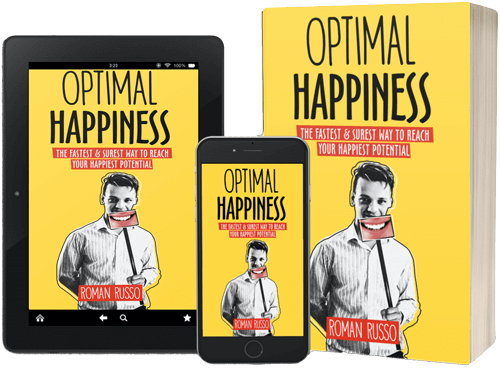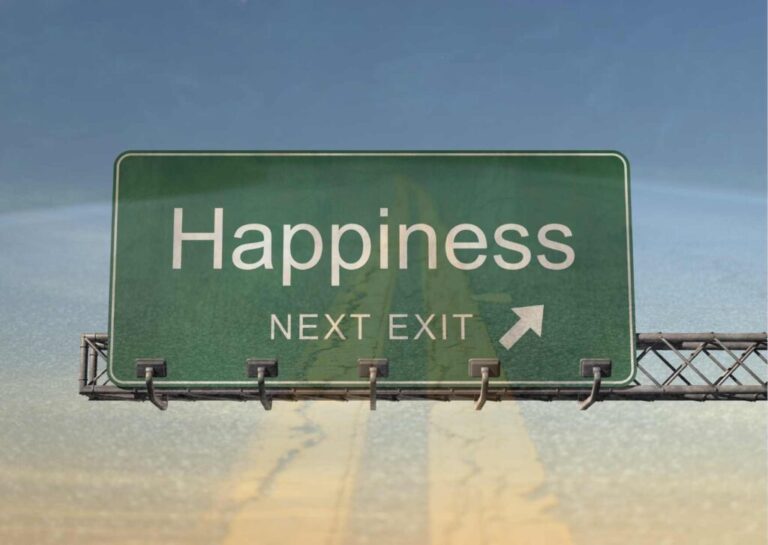What is the most effective way to make a priority list, to set goals, and to find purpose in life? Life is complex. We can take many roads, and people make many promises about what we can do and what we can achieve. So, how do we know which pass is for us?
Dealing with complexity can be challenging, so we have to be “smart.” Here we don’t refer to our level intelligence, nor to S.M.A.R.T., which stands for Specific, Measurable, Assignable, Realistic, and Time-bound, which is a term some of us learn as schools. We refer to a simple logical realization that we don’t have all the time in the world, and we cannot be good at everything, so we have to have a system.
This is what most people who don’t know their reason for life lack. Most people rely on their minds to sort through the vast amount of information and distinguish what’s important from what’s not. But our brain is not designed for the modern world. It is designed for the world that existed ten thousand years ago, which is why we forget, make mistakes, can’t prioritize, and all the other issues we have already mentioned.
This is where To-Do Lists come in. Most of us heard of to-do lists, but for one reason or another, we don’t have one, or we use them to a limited extent. Yet, virtually all big businesses and wealthy people follow some to-do list. They cannot afford not to do so, as this is exactly how they became big and rich. Plans make it easier to look at our goal, organize them, and distinguish between what’s essential and what’s not. They provide us with a lazar-like focus towards goals that we want to achieve first and what we want to stay away from.
Indeed, goal setting is one of the most fundamental life skills. It is an art and science, which is why it requires some time and energy to master. Still, it isn’t tricky, and everyone can get started immediately. Indeed, people who begin making to-do lists reporting almost directly increase productivity, focus, achievement in life, and respective life satisfaction.
There are several great ways we can get started. My favorite one is to start by imagining an ideal life and trying to understand everything it is. Few questions can help:
Who are we? What are we doing personally and professionally? Do we work? Where do we live? Is it a house or a villa? Do we have children? How many? Are we famous? What are we famous for? What do our bodies look like? Do we get complimented? What for? And so on. The sky is the limit, so to say.
Similarly, we need to know what our life is not, which is essential to ask the same questions we asked before but in a negative framed way. It can help look at four pillars of happiness for both cases, as described in previous chapters.
The next step is to look at ourselves in a present moment and ask ourselves the same questions. Here it is essential to be as realistic as possible, such as not considering our potential and not how we perform on our best day. Instead, we should see who we are regularly, such as today, right now, at this very moment. The gap between what is and what we want it to be will be our goal. More accurately, it will be a series of dreams.
Interestingly enough, most people think they know their ideal self-looks, but they don’t know the specifics. This makes the gap between what is and what we want hard to describe. Still, through introspection and trying things out, specifically in parts of life where we have some ideas, we can refine our desires and put ourselves in the direction of an achievable goal.
Another variation of the exercise is merely sitting down and for a minimum of 10 minutes to write down everything that we could ever possibly want. There are no right or wrong answers, and we are to dream big. Ideally, the list should have easy goals like “take out the trash,” but we should also have almost impossible goals to achieve.
I often hear advice to write goals on paper, but I use an app called Ever Note personally. This is a free app, with some paid options, which until now I have not used it. It is a straightforward app as it synchronizes all notes to computers, smartphones, and iPods, making it easy to write down, search, and organize all the notes. Specifically, I like the one-click input widget for my smartphone, which allows me to input notes fast and on the go, almost immediately as an idea comes to my mind. This is not to say that I don’t use physical paper notebooks. I always carry one around with me just in case. In certain situations, they are slightly more convenient. Still, I prefer Ever note to notepad because I wouldn’t say I like transcribing notes, as it is just a good idea to have all notes in one place. Still, I suggest to use both notebook and Evernote but to use Evernote primarily.
Putting Things Into Perspective
The result of either or both exercises should be a long list of goals, which we should now prioritize. Said, some of these goals will be more important than others. To “check the new video of Rihanna” may be nice, but it may not be as important as to “put out a fire in the kitchen.” There is, therefore, a certain logic to which goals have to be satisfied before others, with the essential purposes having priority over the least important ones.
I, personally, categorize goals into A-, B-, and C-level goals. Of course, A-level goals are the most important, and therefore we should dedicate to them around 80% of our time, which is under the Pareto principle 80/20 rule[2]. We should also have a maximum of one or two of A-level goals, which is in line with the book’s logic by Gary Keller called “The One Thing” [3], where Gary Keller incentives us to pursue whatever we most want with a single focus.
Less critical, yet still rather important goals are the B-level activities. They are goals that would be A-level goals if A-level weren’t there and, of course, there are more B-level goals than A-level goals. I suggest having a maximum of 10 of B-level goals, as it still permits us to enjoy the element of focus. Still, we should spend a fraction of our time pursuing them, such as 16% of all of our time, 80% or the 20% of the time that remains.
Logically, C-level goals are all the remaining goals, which are still important, but most of the time, they don’t contribute to our ultimate goal in life, at least not as much. Most of our chores, such as taking out the garbage, are C-level goals. We should pursue them only remaining 4% of the time, and ideally outsource them as much as possible, due to the little time we can dedicate to doing them.
Unfortunately, for most of us, we do the time allocation another way around. We do C-level activities first, speeding up to 80% of the time doing them. We spend the remaining 20% doing both A and B activities. We do so because most of the easy A and B-level activities we completed a long time ago. Now, all we are left with is complicated A-level activities. Oppositely, there are always plenty of easy C-level activities. We know that we want to do C-level activities too, but we often don’t realize how unimportant these things are in a grand skim of things.
We can stay busy doing C-level activities without end and wonder why we always fail to achieve anything of substance. Oppositely, we can do a few A-level activities and become famous for doing them. People will say that we are smart and visionary, while in reality, we are just following our priorities in the order of their importance. Also, it goes without saying that when we complete an A-level activity, some B-level activity will prioritize and become an A-level activity, and some go for a C-level activity then becomes a B-level activity.
But we should not complicate things. While A-level activities are often big and overwhelming, we can always break them down into smaller goals. This is to say, let’s not eat an elephant in one go, but eat it piece by piece (sorry for a non-vegan metaphor). For example, one goal can be “to go beyond the stars,” which is still impossible given the current technology level. Nevertheless, if space travel is our passion, we can always do something today to move us one step closer to this goal. We could pick up a book about rockets or go to an astronomer’s seminar. Of course, after breaking all big goals up into smaller goals, we can break the sequence into A to C-level by their importance. These tiny sparks of passion will ultimately add up to something substantial. It can be something different from our original goal, and we may never achieve space travel. Still, if it is genuinely our A-level goal, pursuing it with a single focus will be the most meaningful thing we can do.
Moreover, we may have different A-, B-, and C- Level goals for other parts of life, such as for Money, Health, Growth, Happiness, and Relationships. In addition to these big categories, I have the most specific subcategories which work well for me, which are:
1) One-off goals – are goals that we can do in one go, such as to feed my dog.
2) Waiting goals – are goals that we can’t complete or do anything about right now because they are dependent on something or someone, such a specific date, such to “go to Tom’s birthday” or “waiting for an email from Robert.”
3) Paid goals – which require money to be completed, such as to buy new socks.
Paid goals are especially important as, for most of us, we have a limited amount of money, but an unlimited amount of desires. Therefore, paid plans help us to prioritize our shopping with the same A to C-level logic. As such, we can save for what matters. For example, I may want to travel worldwide, but I also wanted to go to a 600 euro festival. I realized that 600 euro would allow me to travel for at least 15 days around the world, or it can allow me to go for 3 days to a festival, thus deciding to withhold my money for world travel.
















1 thought on “Make a Priority List, Set Goals, & Find Your Purpose In Life”
Pingback: 100 Celebrities Who Committed Suicide & Their Stories
You must log in to post a comment.